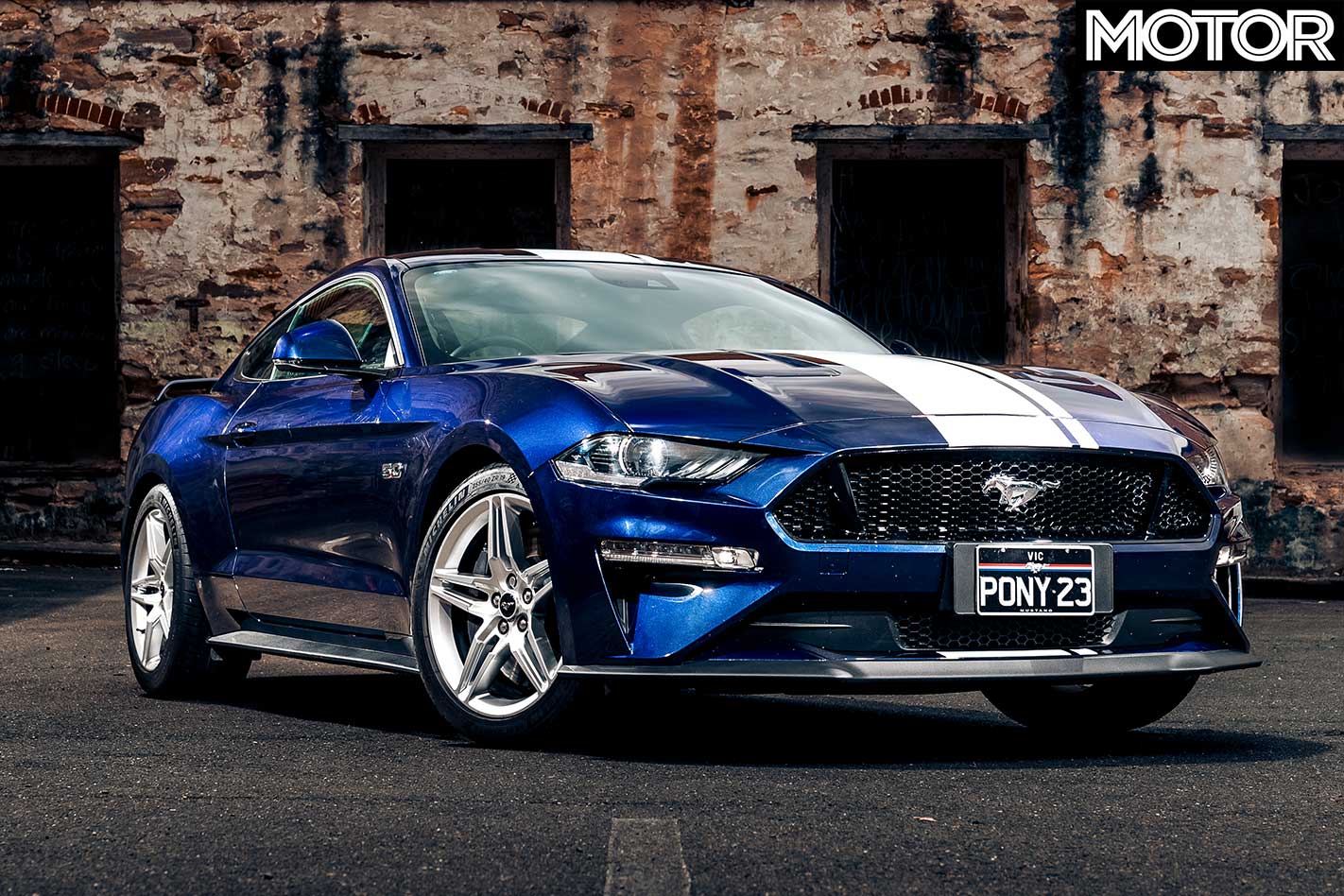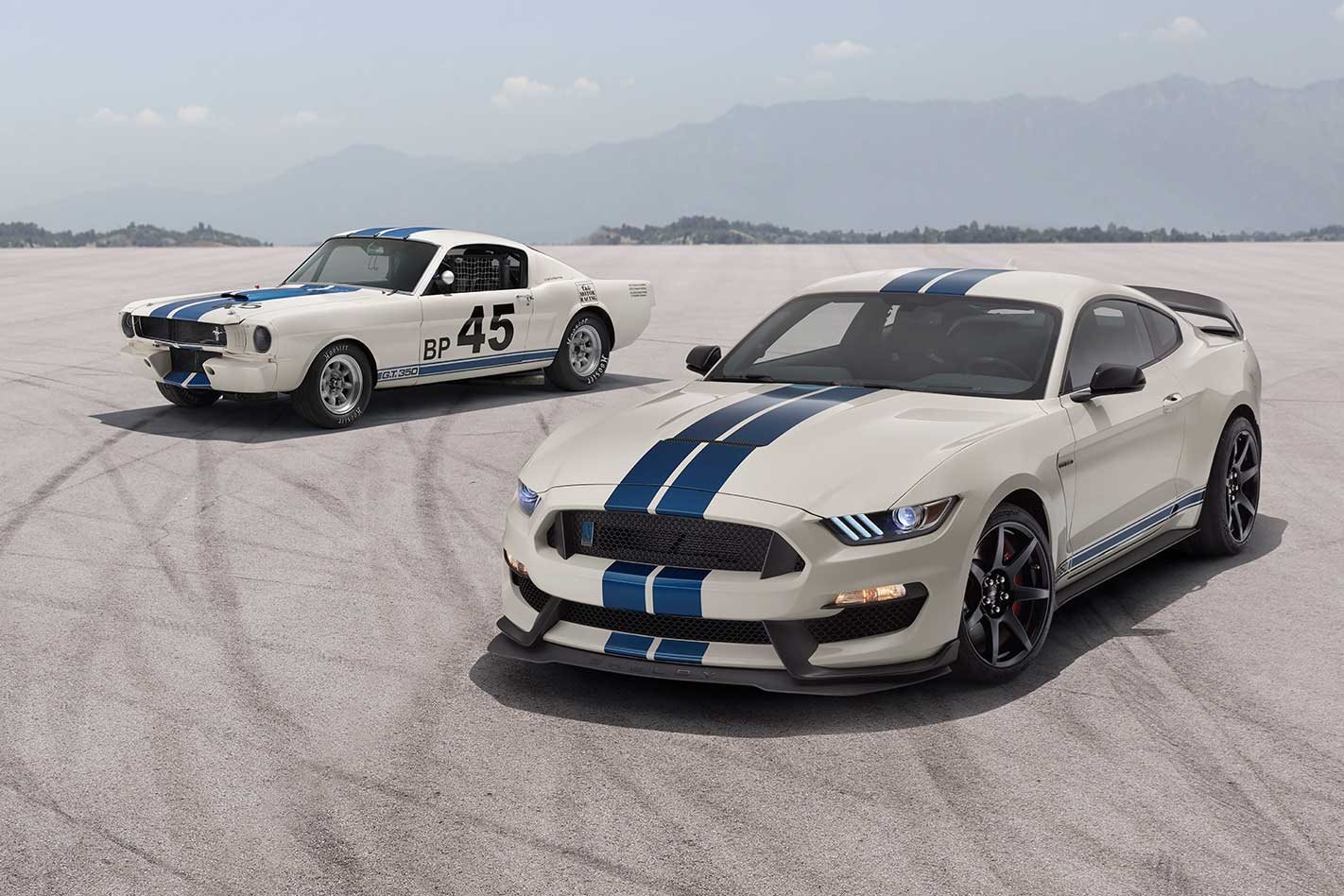
The Ford Mustang started the Pony car movement that made compact sports cars affordable to the masses in the 1960s. Since then it has become the world’s most successful sports car, with 10 million sold globally. We chart the highs – and lows – of the mighty Mustang in Australia and around the world.
- First Generation: 1963 – 1973
- Second Generation: 1974 – 1978
- Third Generation: 1979 – 1993
- Fourth Generation: 1994 – 2004
- Fifth Generation: 2005 – 2014
- Sixth Generation: 2015 – present
First Generation: 1963 – 1973
1962 – In the beginning The Mustang I concept car had a mid-engine layout, yet it still established the classic “ponycar” proportions of long bonnet, short rear deck and sharply sculpted flanks.
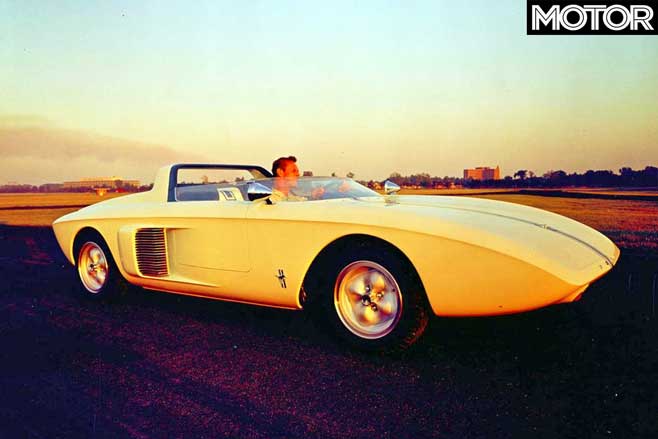
April 17, 1964 Ford introduces the Mustang production model at the World’s Fair in New York. It is named after the legendary P51 Mustang fighter plane from World War II. The price at launch is AUD$2114.
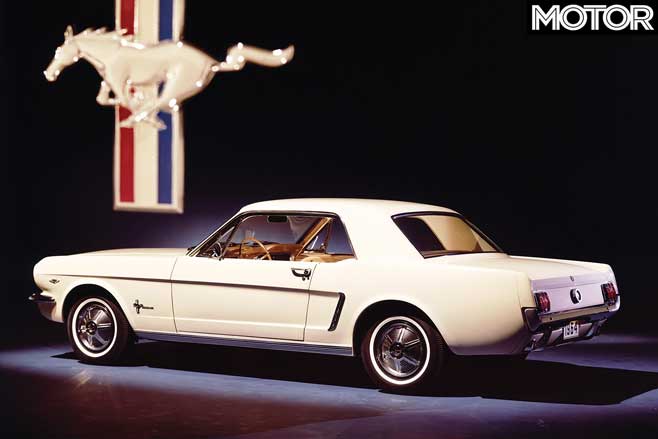
1964 Ford Mustang makes a surprise appearance in the new James Bond film Goldfinger.
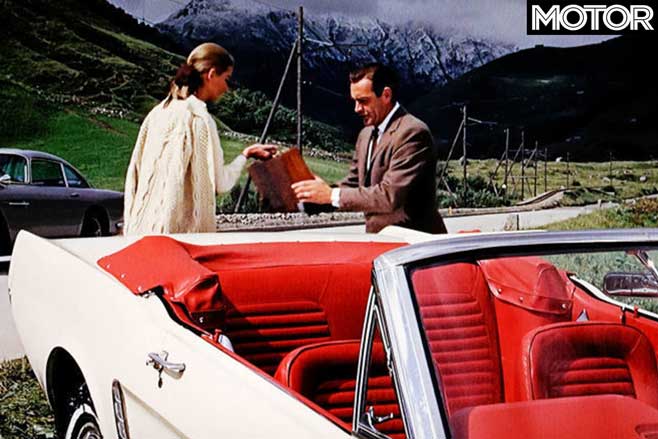
1965 American racing legend Carroll Shelby begins modifying Mustangs for racing and creates the Shelby GT350, the first in a long line of high-performance variants.
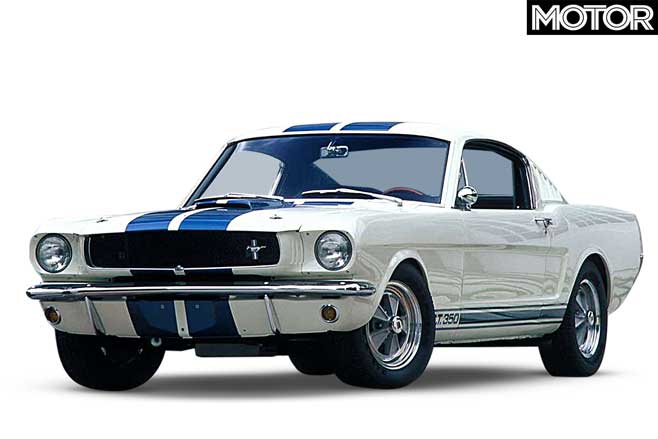
1965 Ford Oz imports and converts 161 Mustangs with 289ci (4.7L) V8, automatic transmission and heavy-duty suspension. The $2895 price is $750 more than the XM Falcon sedan.
1965 Norm Beechey wins the 1965 Australian Touring Car Championship in a 1964 Mustang, the first win by a V8-powered car and the first of five on the trot for Mustang.
1966 Mustang sales pass the 1 million mark in March.
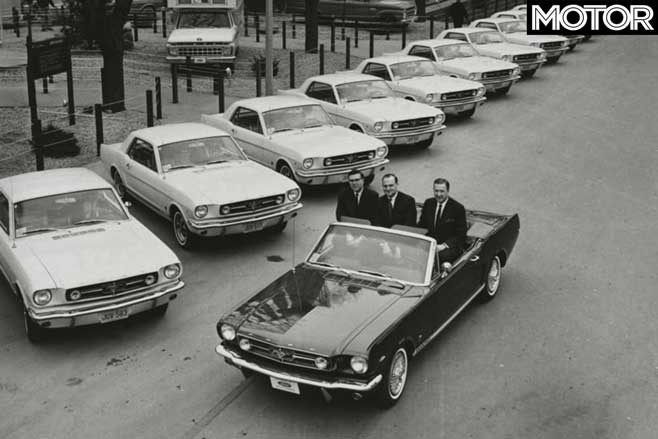
1966 American blues singer Wilson Pickett releases his hit song Mustang Sally, about a guy who buys his girl a 1965 Mustang only to lose her to the car.
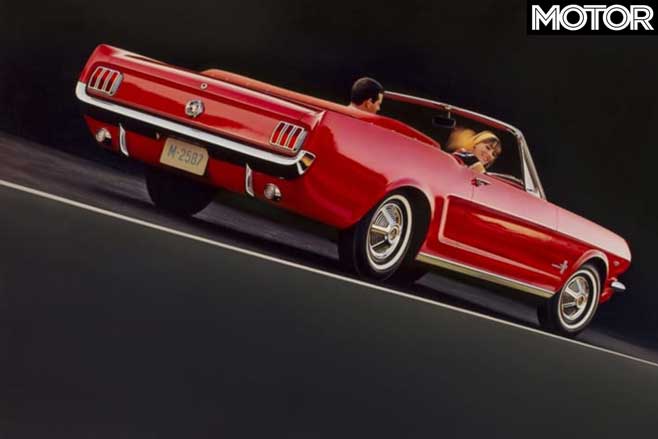
1966 Shelby provides Hertz with a special line of GT350 rental cars. Some were rented by racers and returned with evidence of roll cages being installed and, in some cases, the Shelby-tuned engine removed and replaced with a standard V8.
1967 The 2+2 Mustang goes from a semi-fastback to a sweeping fastback roofline. The Shelby GT500 is introduced, powered by a hefty 7.0L V8 that produces 265kW.
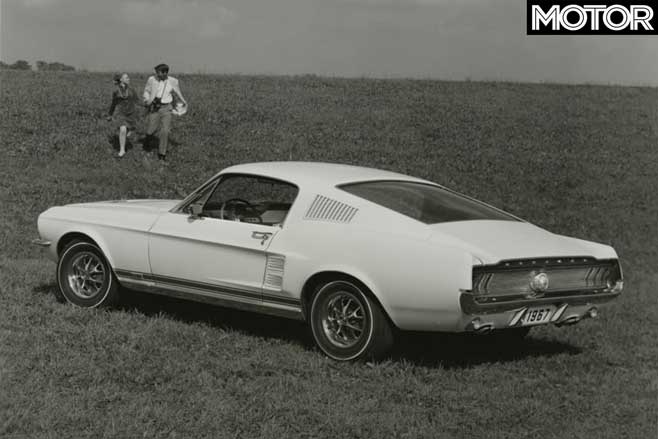
1968 Steve McQueen’s Bullitt movie immortalises the Mustang on-screen and takes Hollywood car stunts to the next level in a 10min epic chase on San Fransisco streets. Ford has since produced two modern limited edition Bullitt replicas and has a third planned for 2018.
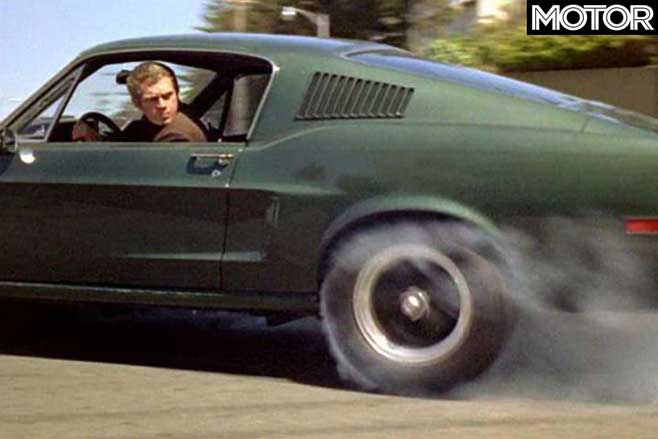
1968 The 302ci (5.0L) V8 replaces the 289. On April 1, the 428ci Cobra Jet engine debuts as part of an option package aimed at enthusiasts.
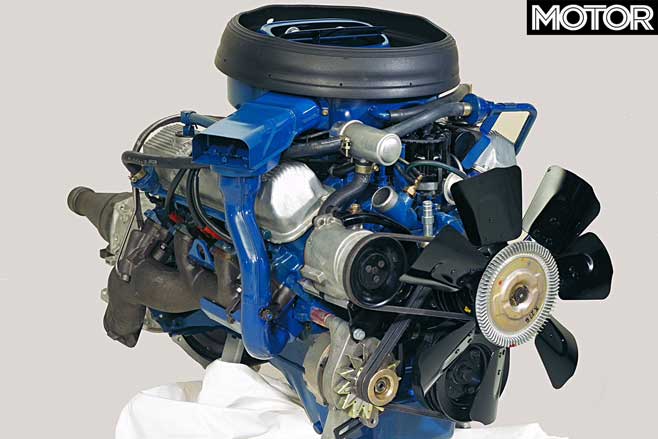
1969 Ian ‘Pete’ Geoghegan wins his fourth, and Mustang’s fifth, Australian Touring Car Championship in a row.
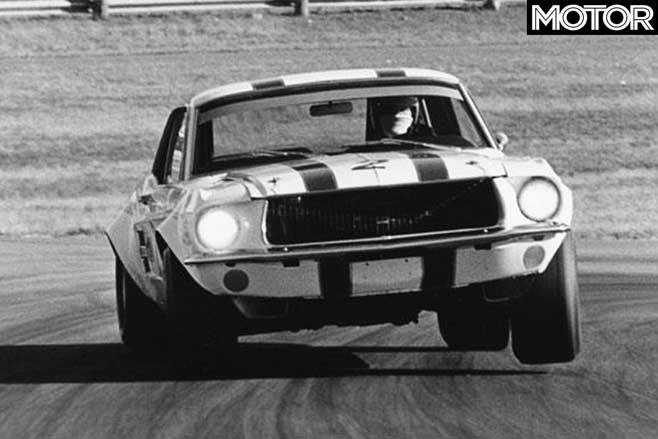
1969 A “steed for every need” update yields 11 different powertrain combinations. New models include the 216kW Boss 302, the 280kW Boss 429, plus the Mustang Mach 1 with an optional 428ci (7.0L) Cobra Jet V8, and the Grande premium model with luxury trim, woodgrain panelling and additional sound deadening.
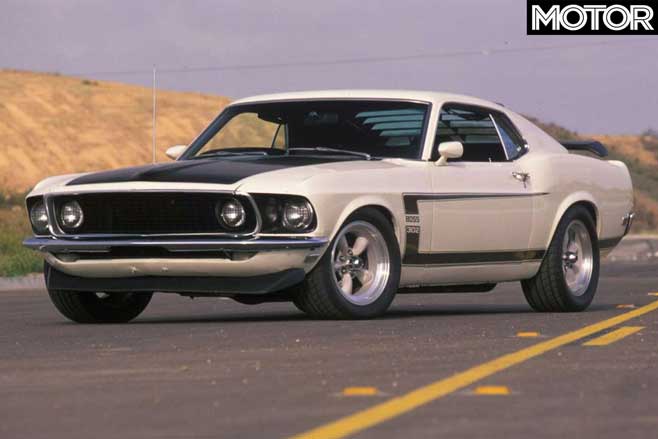
1970 A ram air “shaker” bonnet scoop is offered on any Mustang with a 351ci (5.8L) or larger V8.
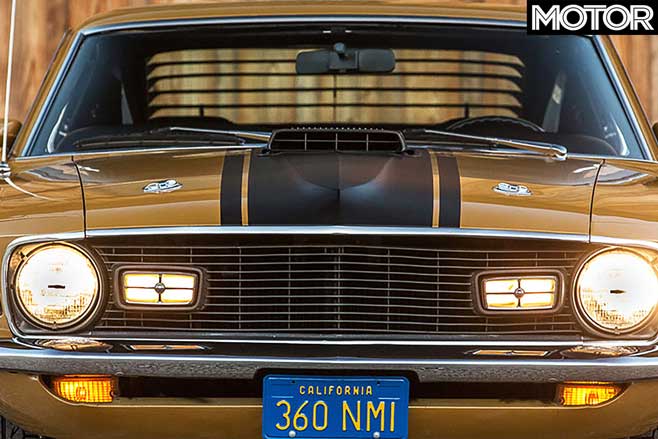
1971 The biggest Mustang ever – 30cm longer and 310kg heavier than the original – is introduced, prompting criticisms that Ford had become “fat and lazy”. The Boss 351 debuts, with its Cleveland block and Cobra Jet heads. The Mach 1 comes with a variety of powertrains, topped by the 429 Super Cobra Jet.
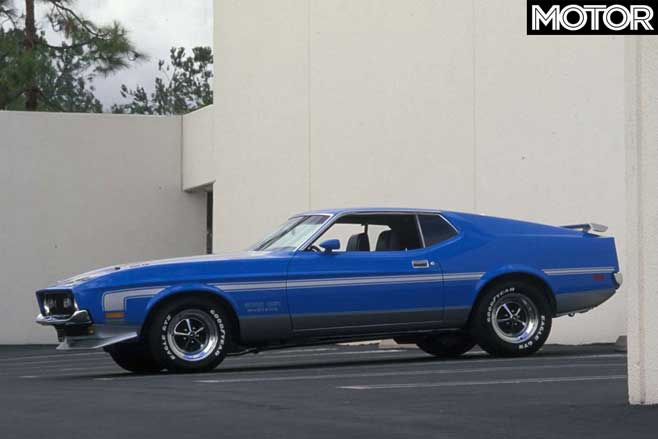
1973 Mustang sales plummet as the fuel crisis takes its toll and customers downsize. The 1973 model year is the last for the original Falcon-platform Mustang, and the last convertible for a decade.
Second Generation: 1974 – 1978
1974 Ford recognises the need for a smaller, more efficient, better quality Mustang to compete with imports like the Toyota Celica, Datsun 240Z and European Ford Capri. The Mustang II’s Ford Pinto underpinnings return it to the same dimensions as the 1964 original, and engines at launch include a 2.3L four-pot and 2.8L V6 – but no V8.
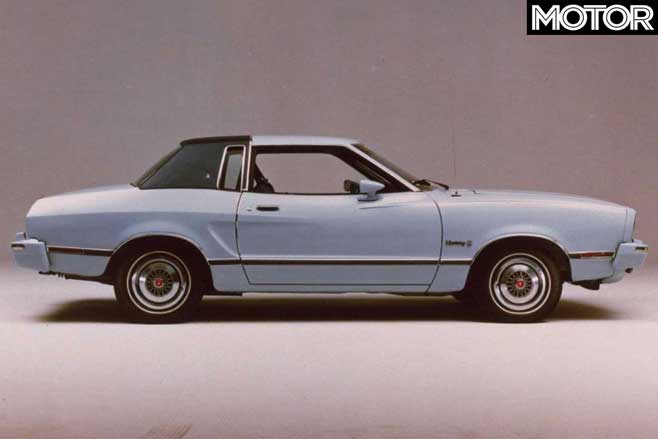
1975 V8 power returns to Mustang with a 302ci small-block. It’s the first Ford engine to be recognised by its 5.0L metric displacement. The four-cylinder Mustang gets a catalytic converter and taller fourth gear to meet tightening emissions standards.
1976 The Cobra II package joins the lineup, replete with non-functional bonnet scoop, racing stripes and front and rear spoilers.
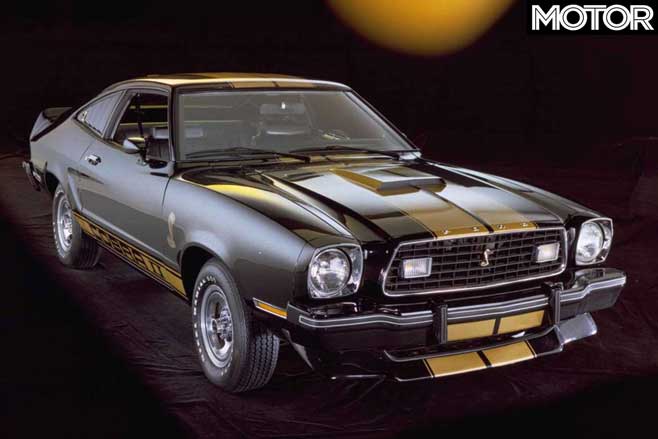
1977 To appeal to convertible fans, a fastback model is added with T-Top removable glass panels.
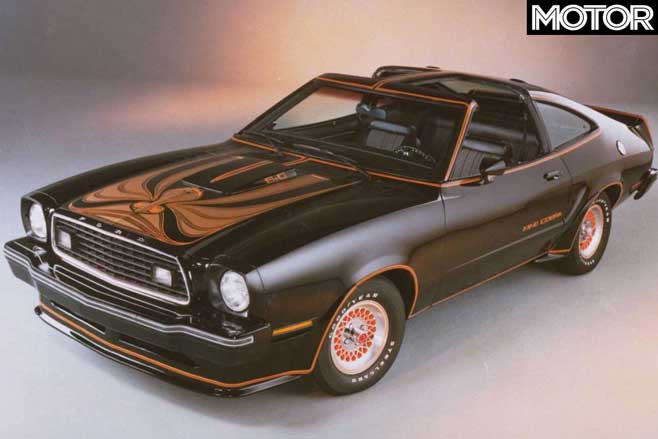
Third Generation: 1979 – 1993
1979 Mustang’s new “Fox” platform shared with the American Ford Fairmont and Mercury Zephyr sedans increases length, width and interior space, yet reduces weight by 90kg. Available in coupe and fastback body styles, the range was initially powered by carryover fours, sixes and V8 engines.
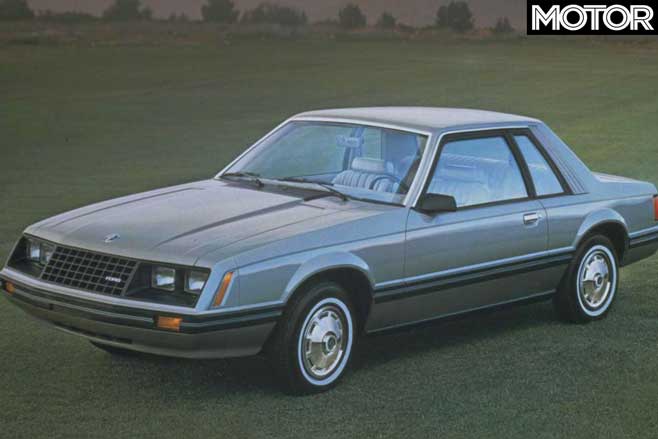
1980 The 5.0L V8 is dropped and replaced by an economy-minded 4.2L derivative of the Windsor V8 with just 89kW – the least ever for Mustang. In contrast, the 2.3L four gets a turbo and 98kW, but mechanical and reliability issues force Ford to drop it the following year.
1982 As petrol prices subside, the Mustang GT returns after a 12-year absence. Also back is the 5.0L V8, rated at 130kW. Optional T-Tops return.
1983 After 10 years, Mustang again has a convertible model, complete with power roof and tempered glass rear window.
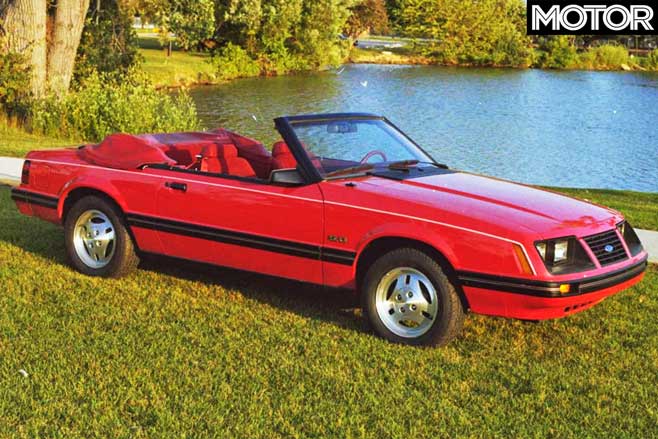
1984 Ford’s Special Vehicle Operations creates the Mustang SVO which features a turbocharged and intercooled 2.3L four-cylinder, bigger tyres and brakes and a double-decker rear spoiler.
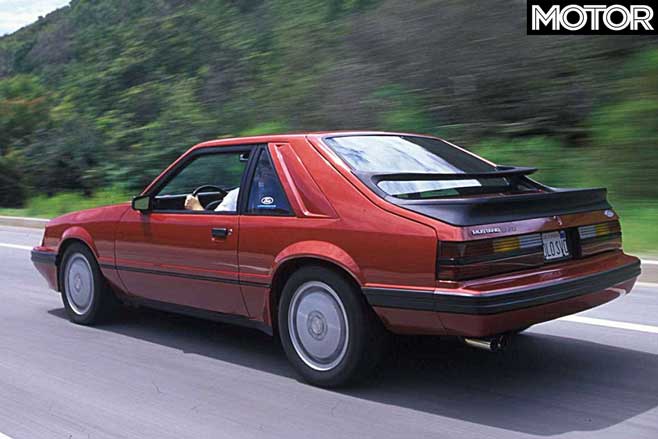
1984 In Australia, nascent Group A touring car regulations prompt Ford racing legend Dick Johnson to import new Zakspeed-built Mustangs for Bathurst. They won’t actually race until 1985.
1985 Mustang gets a revised 5.0L high-output V8 with 157kW in manual transmission tune.
1987 Mustang undergoes a restyle and gains a new “Aero” body. SVO and V6 models are dropped.
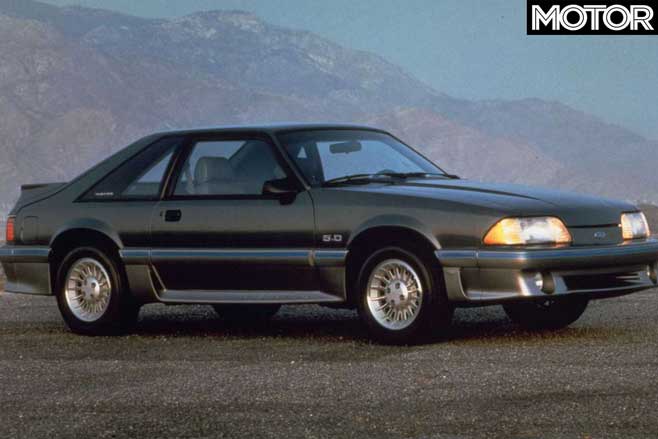
1989 For Mustang’s 25th anniversary, all cars produced between April 17, 1989, and April 17, 1990, sport the familiar running horse on the dashboard with “25 Years” inscribed underneath.
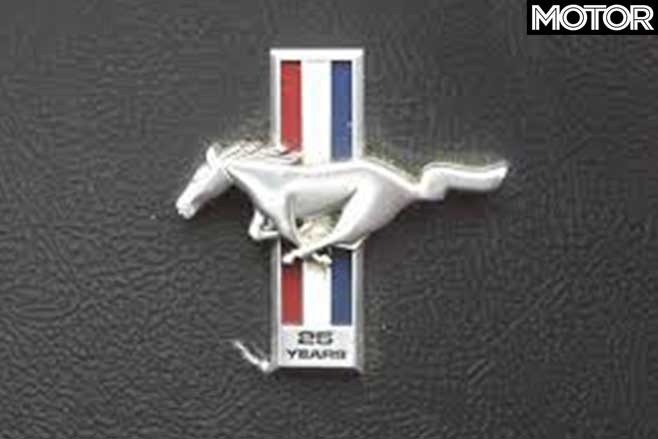
1990 Mustang gains a driver’s-side airbag as standard equipment.
1992 Wire-style wheel covers and whitewall tyres quietly disappear from the US options list.
1993 Ford’s new Special Vehicle Team introduces the Mustang Cobra SVT limited edition with unique styling and performance upgrades. A “Cobra R” racing model adds Koni shocks, an engine oil and power steering fluid cooler, but has the radio, rear seats and air-conditioning removed. Ford requires all buyers to hold a racing licence to ensure the SVT is not seen as just a collector’s car.
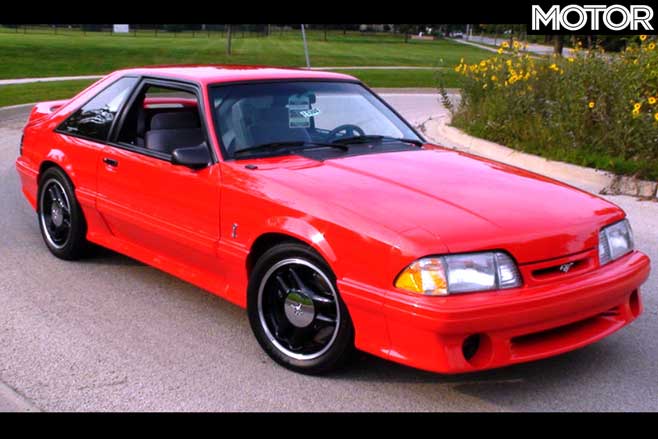
Fourth Generation: 1994 – 2004
1994 For its 30th anniversary, Mustang is dramatically restyled to evoke the car’s heritage. Ford claims 1330 of the 1850 parts are new.
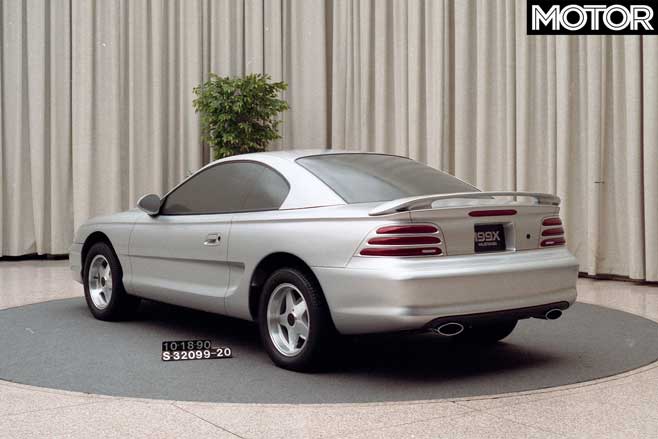
1995 The venerable 5.0L V8 spends its final model year in the Mustang. SVT produces 250 Cobra R models with a 224kW, 5.7L V8.
1996 Mustang GTs and SVT Mustang Cobras are equipped with Ford’s new modular 4.6L SOHC V8. It matches the 5.0L Windsor’s outputs but is criticised for lack of torque and responsiveness.
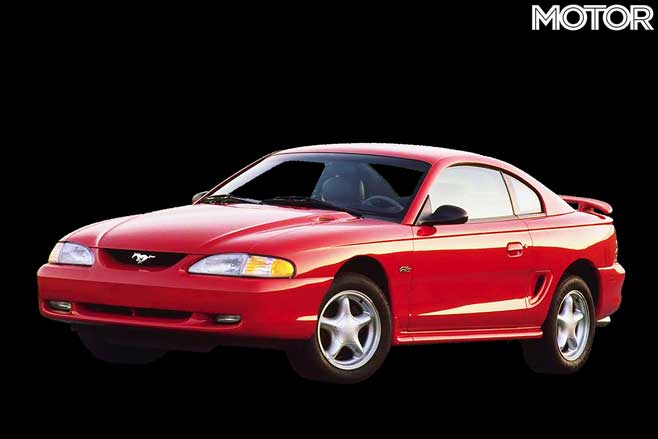
1999 A redesign gives Mustang the sharply creased lines of Ford’s New Edge global styling language, including pronounced wheelarches, a new bonnet, grille, fascias and lights.
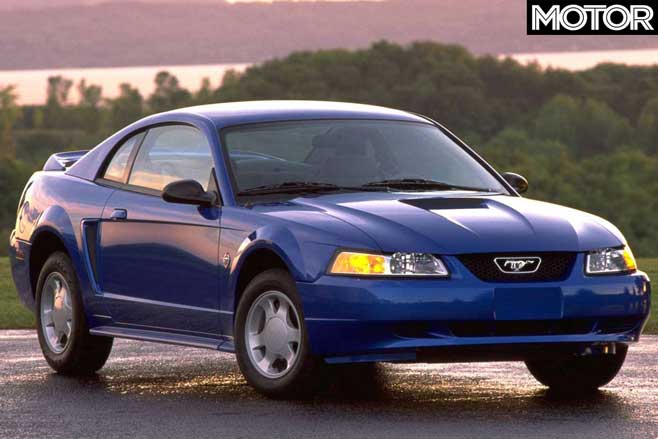
2000 The third SVT Mustang Cobra R has Eibach suspension, Brembo brakes, side exhausts and a 287kW, 5.4L DOHC V8 mated to Mustang’s first six-speed manual transmission.
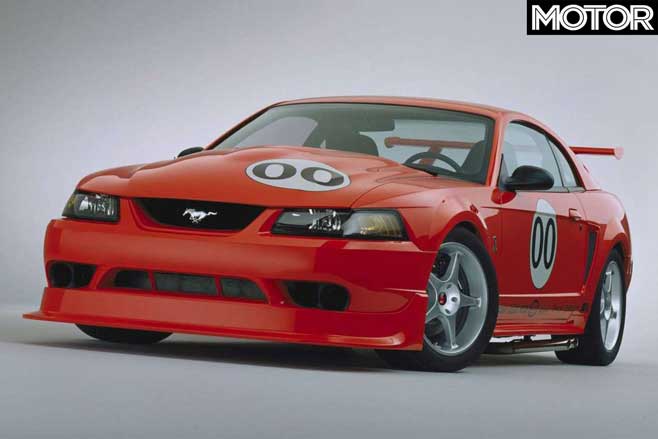
2001 The Mustang Bullitt GT makes its debut, inspired by the Mustang Steve McQueen drove in the 1968 movie. It has the same Highland dark green paint, side scoops, 17-inch Bullitt-style aluminium wheels and tuned suspension.
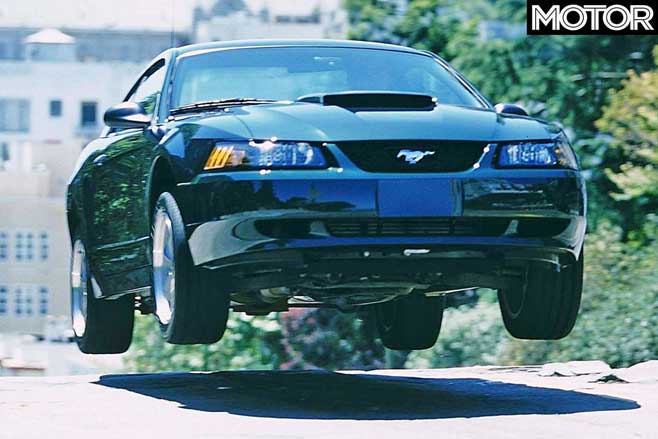
2001 Ford’s Tickford performance arm imports and converts 250 Mustang V8 coupes and convertibles to right hand drive for Australia. Prices start at $85,000 for the coupe and $89,000 for the convertible, but sales are sluggish because of poor conversion quality and the Mustang’s V8 trailed Australia’s Falcon V8 for power and performance.
2002 Mustang’s two closest US rivals, the Chevrolet Camaro and Pontiac Firebird, end production. The Camaro would eventually return in 2010.
2003 Following the success of the Bullitt edition Mustang, Ford revives the Mach 1 nameplate with a retro-inspired model that features a 227kW Cobra motor with a functional ‘shaker’ bonnet scoop, Magnum-style wheels and 1960s era comfort weave seats.
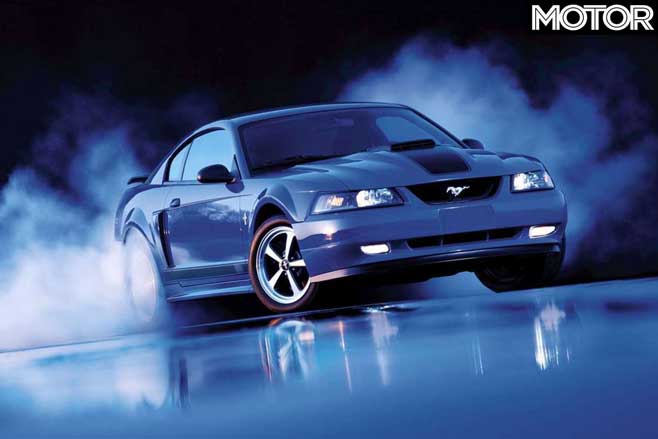
2004 Ford produces its 300 millionth car – a 2004 Mustang GT convertible 40th anniversary edition. 2004 Mustangs are the last built at Ford’s Dearborn Assembly Plant, which had produced every Mustang model since inception.
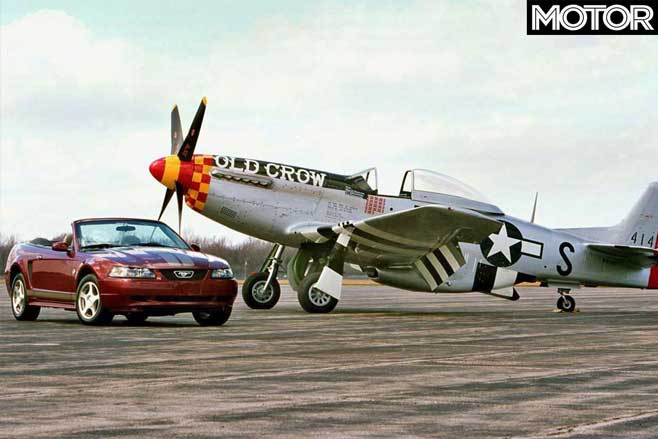
Fifth Generation: 2005 – 2014
2004 Ford reveals the fifth generation Mustang at the North American auto show, heavily influenced by the 1964-67 original. Ford design chief, J. Mays, calls it retro-futurism. Both fastback and convertible bodystyles are offered, powered by a new 157kW 4.0L V6 or 227kW 4.6L V8. Production moves to Flat Rock, Michigan.
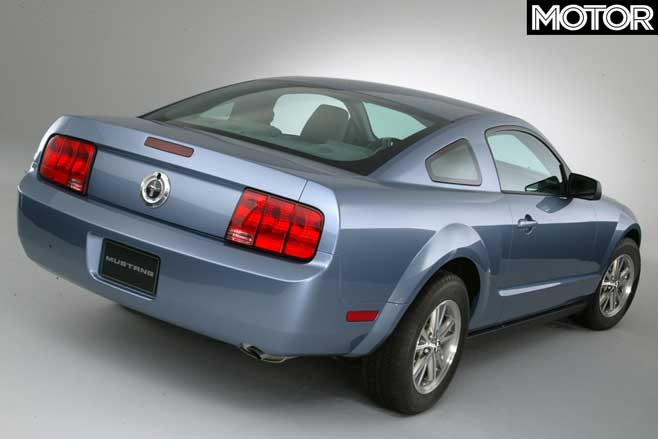
2006 Ford begins a series of retro-inspired limited editions with a new Shelby Hertz model and a Bullitt in 2008.
2007 Ford and Shelby reunite to create the Shelby GT500 with a 373kW supercharged 5.4L V8. The partnership continues with a 2008 Shelby King of the Road (KR) that produces 403kW and has a carbonfibre bonnet.

2008 Facelifted Mustang is revealed the Los Angeles auto show with restyled front and rear bumpers, slimmer headlights and three-bar taillights with sequential turn signals.
2011 The entire Mustang lineup gets updated powertrains, including a 227kW 3.7L V6 and 307kW 5.0L Coyote V8 that also forms the basis of the supercharged V8 used in Australian FPV Falcons.
2012 Ford revives the Boss 302 nameplate with an upgraded, track-oriented Mustang that features retro-inspired C-stripes down its sides, more power from its 5.0L V8, adjustable suspension and a carbonfibre front splitter.
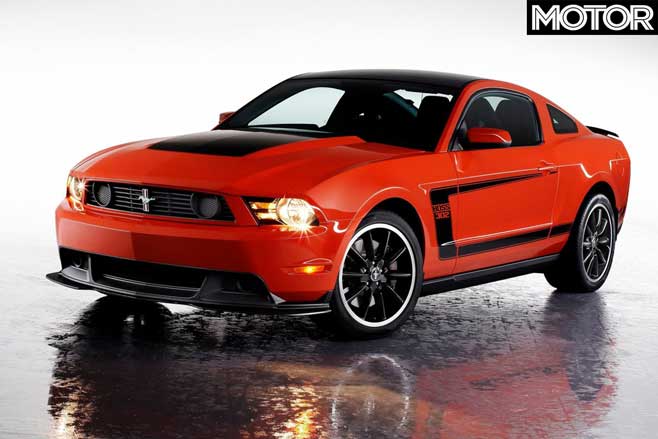
2013 The most powerful factory Mustang ever is revealed, the Shelby GT500 with a 494kW, 5.8L supercharged V8.
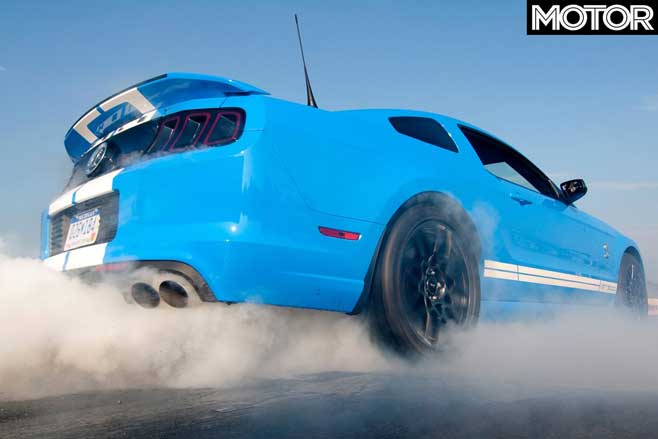
Sixth Generation: 2015 – present
2013 Ford debuts the sixth-generation Mustang in six locations around the world simultaneously, including Sydney.
Right-hand-drive production is confirmed, signalling a return to Australia in 2016. Mustang’s wider and lower body increases interior space, and independent rear suspension improves dynamics. Two engines are confirmed for Australia, a 231kW 2.3L turbo four and 325kW 5.0L V8.
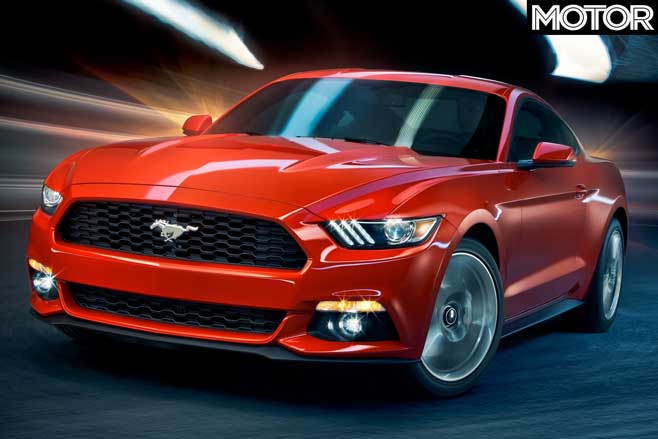
2014 Ten Millionth Mustang sold in the same year Mustang celebrates its 50th birthday.
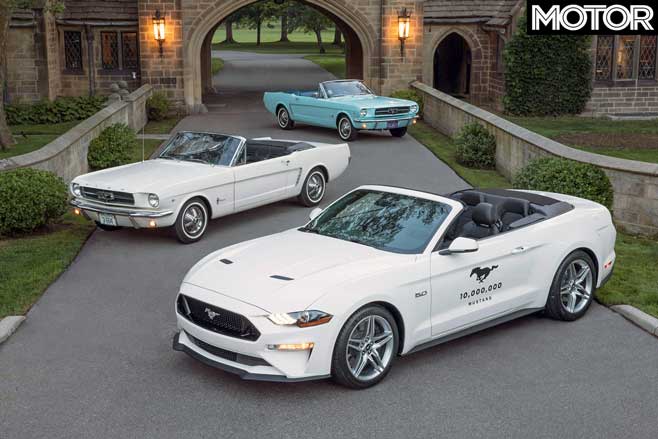
2016 Ford Mustang returns to Australia.
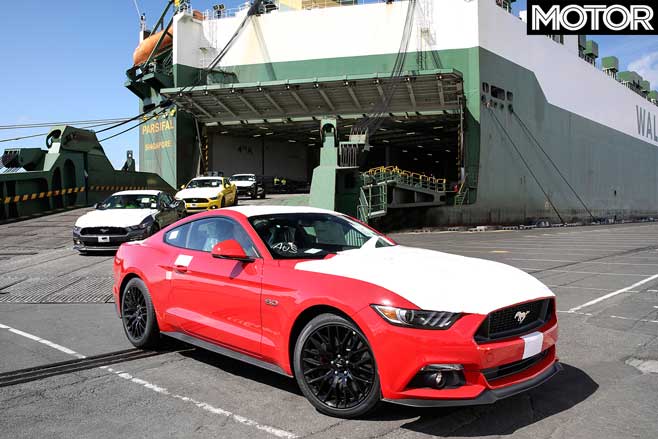
2017 The MY2018 update sees the 3.7L V6 dropped from the international lineup, along with power and torque increases for 2.3L and 5.0L engines. Both get a new 10-speed automatic co-developed by Ford and GM, and the option of MagneRide adjustable suspension and Recaro leather sports seats.
